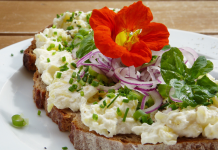We bet there are a few foods on your “eww” list that you steer clear of.
Brussels sprouts, beans, or smelly cheese. Are they on your ‘can’t eat them’ list? And if they are, does this make you a fussy eater? Perhaps, but maybe it’s just that your first experience didn’t go too well and you’re experiencing a mental block.
Let’s look at some tips for picky or fussy eaters to help make trying new foods stress free.
- Try something new
Why is it that when we are out with friends or family, we feel more adventurous? It’s possibly because they make us feel safe and secure in a new, unfamiliar environment, making us more inclined to try different experiences. Let’s be honest, there’s a thrill in visiting a new restaurant or trying a cuisine that’s different to what you’re used to. And while the tastes might not always be to your liking – or a little out of your comfort zone – at least you took the plunge and introduced your tastebuds to some new and interesting flavours.
- Reward your efforts
Being open-minded is one thing but getting you to put a food you’re not keen on in your mouth is a whole different story! The solution might be as simple as rewarding yourself for trying something new. Take for example, trying falafels. You might not like the taste of chickpeas, so instead of focussing only on the thing that causes anxiety, order a side of something you like, like your favourite salad or a tall, iced tea. This way you will still get to enjoy your dinner even if you didn’t particularly like the falafels.
- Understand why you don’t like certain foods
A little self-reflection never hurt anyone. As we touched on earlier, our fussy behaviour can stem from a bad experience – be it yours or someone else’s. Ask yourself why you are not wanting to try these foods. Is it the texture? Is the smell too potent? Could it all be in your head? You never know, maybe the tastes you despised as a kid might seem pleasant now. Perhaps someone put you off the creamy texture of steamed cauliflower when you were a child, but you enjoy that sensation now. Everything deserves a second chance. So go on, take a nibble.
- Prepare the food yourself
Knowing exactly how it is prepared, tasting the dish throughout the cooking process and being proud of what you made might be the push you need to try new foods. You might even find that you didn’t like how it was prepared before but will eat it this new way. Let’s say you don’t like mushrooms but eating them in a hearty stew makes them melt-in-your-mouth tender instead of rubbery. Or maybe you’ll find a new appreciation for olives when they’re sliced and arranged on a homemade pizza. It’s all about experimenting and finding what you like, the way you like it prepared.
- Function over fuss
Let’s be honest, most of the foods we don’t like are probably fruits, veg or some type of protein – which is not ideal since these foods are packed with the essential nutrients, vitamins, minerals, and fibre that our bodies need to function optimally. This means that you need to start seeing the bigger picture and understand that some foods are mind over matter. There will be foods that are not your favourite, but they serve a specific function in the body to keep us healthy. When we stop to consider the nutritional benefits of these foods, trying them doesn’t seem like too big an ask. So, instead of shoving the greens under the table for the dog, understand that the functions these foods serve far outweigh not liking how they look, taste or smell. Most of the time, people are not fussy by choice and just need a little nudge to help them get reacquainted with food. New experiences, keeping an open mind and realising the nutritional benefits will surely help overcome any bad memories you have of food, setting you on the path to becoming a true foodie.






